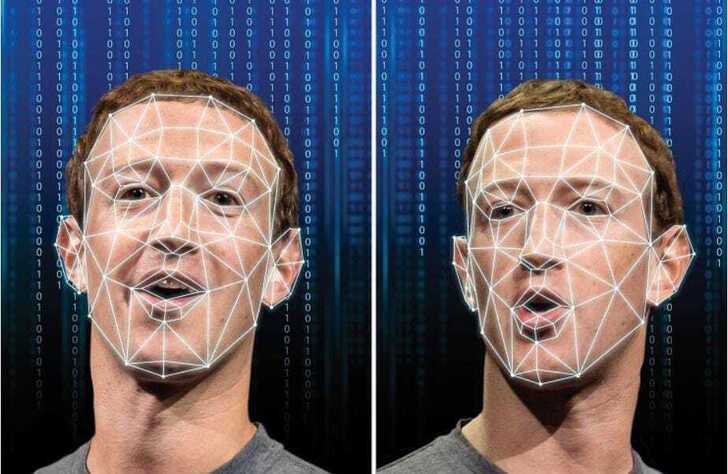The start of deepfake technology in the current digital generation has created global excitement and anxiety. Technology presents severe ethical problems in addition to its incredible promise for the enjoyment and educational sectors. This blog desires to demystify deepfake technology so everyone can readily comprehend its benefits, risks, and process tools.
Understanding Deepfake Technology
Effecting adversarial networks (GANs) is the foundation of Deepfake technology. This is a short description of how it works:
-
Enlightening the AI The discriminator and the generator are the two models used in GANs. The discriminator evaluates the virtue of the photos or videos the generator delivers. Both standards begin with essential capabilities. The discriminator gains the capacity to discern between delivered and actual images, while the generator starts basic visuals.
-
Iterative Enhancement: The generator and discriminator improve their powers through stable interaction. As time passes, the discriminator enhances its capability to recognize subtle contrasts between authentic and deceitful photos, while the generator knows how to create more natural images.
-
How to Make a Deepfake: After the models are adequately prepared, the AI system must be supplied with a large amount of data (such as personal videos and photographs) to make a deepfake. After that, the AI uses this data to create new material in which subjects appear to communicate or do items they never did.
Uses for Deepfake Technologies
Deepfake technology has valuable uses in several industries beyond creating viral online content.
-
Entertainment: Without paying a fortune for physical effects, filmmakers can utilize deepfakes to improve the visual products in their films, bring performers back to life, or de-age them.
-
Education: Historical documentaries bring historical characters to life and present a dynamic process of introducing pupils to recorded occasions.
-
Personalization: To improve contact and attention, marketing campaigns could tailor content to the audience's language or even possess a well-known face.
Risks and Ethical Considerations
They have fantastic power and a vast deal of responsibility. Deepfake technology's possible misuse presents several ethical questions:
-
Misinformation: When misapplied, deepfakes can produce likely fake news that propagates false information and impacts political outcomes and public view.
-
Infractions of Privacy: When someone's equality is used without consent to create deepfakes, serious privacy breaches and damage to the individual may result.
-
Legal and Moral Difficulties: It's becoming easier to make phoney videos that look natural, which makes it harder to differentiate between fact and invention and presents likely moral and legal problems.
How to Guard Against Deepfakes
With the increasing availability of deep fake technology, it's essential to develop an imperative awareness for recognizing these models:
-
Explore the Reference: Examine the authority to confirm the content's legality. Unverified knowledge is less likely to be transmitted by trustworthy news sources.
-
Seek for Flaws: Even while deepfakes are becoming increasingly complex, they can be identified by obvious signs like irregular lighting, weak lip synchronization, or strange blinking.
-
Use Technology: You can tell if a movie has been exploited by utilizing technologies that can identify deepfakes. Many companies are creating tools expressly to fight deepfake technology.
Face-swapping technology has several advantages in a range of fields:
Entertainment:
Face Swap lets users swap faces with friends, relatives, or celebrities, providing hours of entertainment. This amusement element makes people laugh and enjoy themselves, making it well-liked on social media sites. However, face swap is a canvas for artistic expression, permitting users to experiment with visual narrative and explore different uniqueness. This technology allows artists and content producers to develop engaging and creative material.
Education:
Face swapping enhances student engagement in classroom backgrounds by improving learning interactivity and immersion. Teachers might use face swapping to assist pupils in comprehending complex subjects or bring documented qualities to life.
Marketing:
Companies use face-swapping in their campaigns to deliver engaging, interactive content that people desire to share. By executing face-swapping filters and effects, businesses may improve brand distinction and engagement memorably and dynamically.
Personalization:
Face swapping lets people communicate their qualities and styles by customizing digital knowledge. Users can make personalized graphics that showcase uniqueness, from playful photos to customized gifts.
Inclusion:
Face-swapping technology licenses and fosters inclusion for people with impairments or extra faces. With the tools it offers to alter face characteristics, everyone can be compatible with their uniqueness and personal choices.
Wrap It Up
Although it may seem complicated, comprehending deepfake technology is essential in the present digital era. By dissecting the complex algorithms and techniques, we can appreciate their ramifications and make wise decisions. Let's approach deepfake technology cautiously and with interest as we guide the continually changing world of digital media. A deeper understanding will enable us to recognize and control its hazards while appreciating its possible benefits. We can appropriately utilize the help of new technology by working together to guide its difficulties.
Website of Source: https://www.wefaceswap.com/
Source: Story.KISSPR.com
Release ID: 1015210

